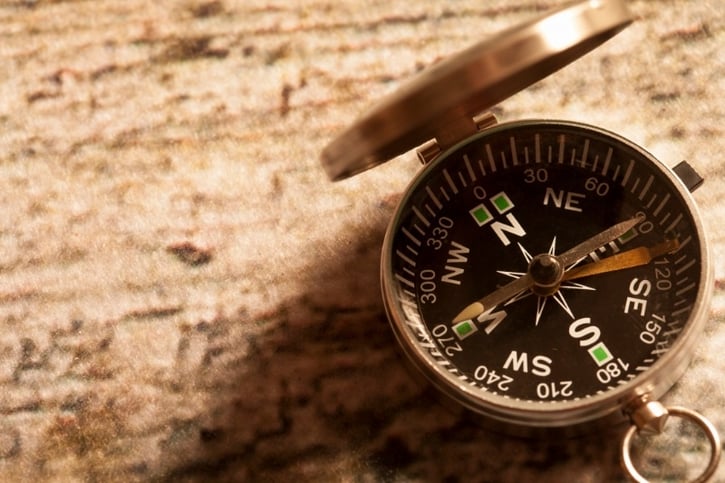
The 5 W's of the Buyer's Journey
August 6, 2015
By Rachel Moore

You’ve heard the stat before: up to 60 percent of the sales cycle is already complete before your prospect ever picks up the phone and speaks to a rep. That means that the vast majority of selling happens online: on your website and through your content. It also means that your inbound marketing efforts have the potential to either be your organization’s most successful salesperson, or the biggest roadblock in your sales process. It’s your role as an inbound marketer to make sure your website and content efforts are on the winning side of that equation.
How can you maximize your marketing to help not only close more customers, but also attract more traffic and convert more visitors into contacts? By taking the time to research, understand, and optimize all your activities around your buyers’ journey (or journeys). In order to accomplish such a feat, it’s important to be sure you understand precisely what that journey is – as well as who it’s for, where it takes place, when, and why.
Before we dive into the five W’s of the buyer’s journey, let’s take a look at what a buyer’s journey is at a high level, and how it relates to our activities as inbound marketers. If you’re looking for in-depth information, check out this blog post. Want the “in a nutshell” version?
Here’s a quick-and-dirty run-down of what the buyer’s journey is all about:
Now that we’re all on the same page with what a buyer’s journey is in the first place, let’s dive deeper into the 5 W’s of the buyer’s journey:
Who
More often than not, each of your buyer personas will have different needs, concerns, goals, questions, and thought processes leading up to making a purchase – meaning, each of your personas will likely have a different buyer’s journey.
The "who" portion of a buyer's journey can refer to either which of your personas the journey is being created for, or which personas will be involved in the buyer’s journey leading up to making a purchase. For instance, perhaps the primary buyer (i.e. the person who will make the decision in the “decision” stage of the buyer’s journey) needs input from several personas before signing the check, or perhaps the actual end users of the product will not be involved in the buying process whatsoever. Either way, it’s important to know for whom you’re creating a buyer’s journey – even if that person(a)’s decision is ultimately influenced by others.
What
What are the different types and topics of information your prospective buyers will want or need in each stage of the buyer’s journey? What’s the initial problem they face and the questions they’re asking? The “what” element of the buyer’s journey encompasses precisely the topics that content should cover, but it also touches on the particular format of content that will perform best.
For instance, if your persona is a CTO at a midsize company, suitable “consideration” stage content might be a technical PowerPoint presentation. On the other hand, an organization whose personas are middle school teachers might find more luck with a graphical comparison chart or checklist.
When thinking about the “what” of your buyer’s journey, explore both what persona- and stage-appropriate content should be about, as well as the format it’s best suited to.
Where
If you’ve ever read about or conducted buyer persona research, you know that one of the key criteria to identify is how your persona learns about new things. The same concept extends to buyer’s journey research: it’s important to identify where the content you create should be posted, published, or promoted in order to reach the right people at the right time. For instance, does your persona look for problem-solving guidance by talking to their friends, peers, or co-workers about their experiences? Do they frequent groups or networks, like on LinkedIn, or do they use Google or Bing to search for answers to questions? What about review sites like Yelp or others?
In terms of a buyer’s journey, the “where” element refers to where your persona is looking for answers to their questions or solve their problems, so you can be sure to post your content in those locations or distribute it to those key influencers.
When
The buyer’s journey has three stages characterized by the different questions, needs, and states of mind prospective customers have leading up to making a purchase.
In the “awareness” stage of the journey, prospective customers have identified a problem or opportunity but may not yet know its cause, implications, or if it can even be solved or addressed. They’re aware of a problem, but are still learning about it and aren’t yet ready to hear about solutions.
Content that performs well in the awareness stage is highly educational and not at all solution-based – very different from content that’s useful in the “consideration” stage, when someone has identified that they have a problem and are exploring potential ways to solve it.
The same is true for content in the “decision” stage, when a particular solution strategy has been decided upon and a solution provider (i.e. product or service) is being decided upon: content that performs well in the “consideration” stage is likely completely irrelevant to individuals who have entered the decision stage – and vice versa. For example, it’s only in the decision stage when product- or brand-focused content is truly relevant: promoting ones’ product offerings to someone before this stage not only may fall flat as a strategy, it could actually drive potential customers away as it’s perceived as too self-promotional.
Identifying what stage of the buyer’s journey your personas are in is essential to ensure you’re presenting the right person with the right content at the right time.
Why
Related to “what” and “when” is “why.” Why is this persona looking for a solution to this particular problem or opportunity to seize? What’s at stake if they don’t take advantage of the opportunity or address the issue?
Identifying the “why” of your buyer’s journey involves not only knowing what the problem is that needs to be solved, but also knowing whom you’re solving a problem for (i.e. your persona).
Taking the time to map out the specific buyers’ journey your persona(s) take leading up to purchasing your product or serve is what separates ho-hum inbound strategies from those that produce truly remarkable content and deliver out-of-this world ROI. Knowing the five W’s of what defines buyers’ journeys is the first step to creating these maps.

About the author
Rachel Moore was formerly a Senior Consultant and Team Leader at SmartBug Media. A HubSpot alumna, Rachel uses her 7+ years of experience as a marketer and neuroscientist to help clients develop innovative strategies to achieve and exceed their business goals. Read more articles by Rachel Moore.




















